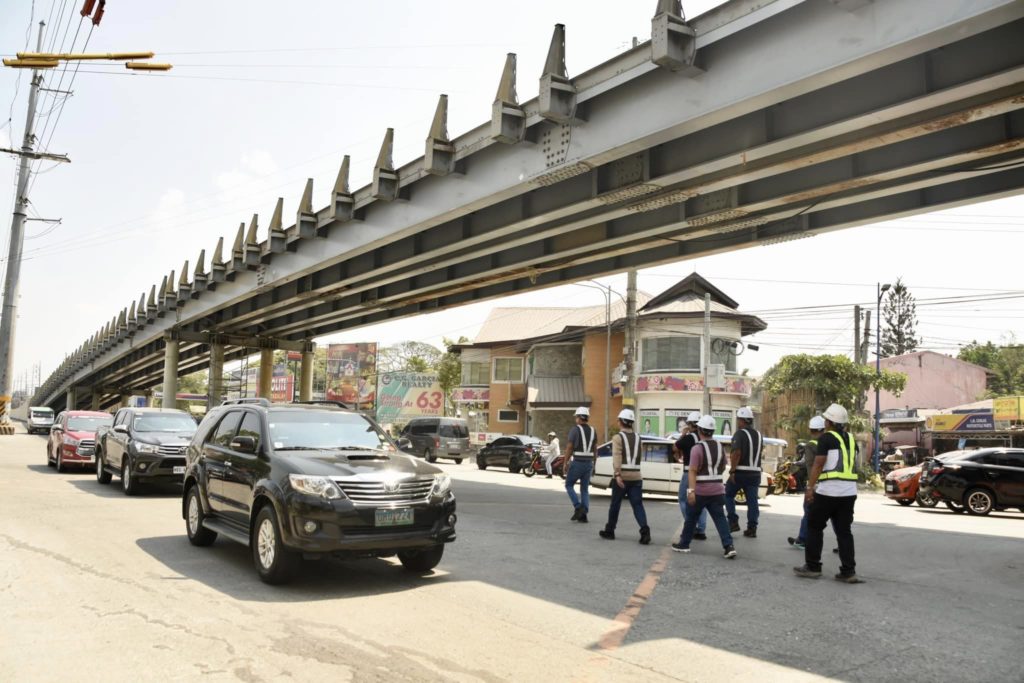Earlier this month, President Ferdinand R. Marcos Jr. vowed to develop nearby provinces and cities as part of the long-term solution to the traffic problem in Metro Manila.
He also instructed members of the cabinet to submit their recommendations for a comprehensive and realistic approach in solving the traffic gridlock.
For Central Luzon, the Department of Public Works and Highways (DPWH) is building infrastructures that aim to ease the ‘carmageddon’ in its major thoroughfares.
Infrastructure development and traffic management
Adjacent to Metro Manila, vehicle volume in the roads of the region’s provinces, particularly Pampanga and Bulacan, has been increasing.
DPWH Assistant Regional Director Melquiades Sto. Domingo emphasized that they are implementing traffic decongestion projects that will boost Central Luzon’s economic activities.
“Once realized, these projects will ensure reduced travel time and fuel efficiency. We will ensure and improve the connectivity of our roads and strengthen our bridges,” he said.
For 2024, DPWH Region 3 received a total budget of P126.5 billion to construct about 2,995 projects.
Of this figure, P22.98 billion is allotted for 452 projects that will ensure the safe and reliable road network system on national roads and bridges.

Improvement of highways and expressways
The worsening traffic jam results in a waste of time, fuel, and money for motorists and commuters alike.
To lessen the dilemma of everyday commuting in the region, DPWH is constructing high standard highways and expressways.
“We ensure that these have complete features such as lights, pavement markings, and even bike lanes to be used by everybody,” Sto. Domingo stated.
One of its major projects is the Central Luzon Link Expressway (CLLEX), a four-lane expressway with a total length of 30.7 kilometers. It has a total cost of P12.61 billion.
CLLEX will facilitate fast, safe, comfortable, and reliable means of transport in the region.
It forms an important east-west link for the expressway network of Central Luzon to ensure a continuous seamless traffic flow for the motoring public from Metro Manila and vice versa passing thru the North Luzon Expressway (NLEX), Subic-Clark-Tarlac Expressway (SCTEX), and Tarlac-Pangasinan-La Union Expressway.
The project will shorten travel time between the cities of Tarlac and Cabanatuan to just 20 minutes from the usual 70 minutes.

Diverting traffic through bypass roads
The implementation of road projects for the improvement of inter-city or municipality and provincial and regional linkages will also aid in averting traffic congestion in Central Luzon.
Given this, DPWH is building bypass roads which will help in providing alternative routes for motorists. These will in turn decongest the primary roads.
“When finished, we will benefit from these projects as these will decongest traffic in the Maharlika Highway and Manila North Road,” Sto. Domingo stated.
Among these projects is the Lubao-Guagua-Minalin-Sto. Tomas Road in Pampanga which intends to decongest Jose Abad Santos Avenue (JASA) and other peripheral roads going to the provinces of Bataan and Zambales. It will also provide access to vehicles bound for NLEX.
At 28.8 kilometers, the road has a total cost of P30.85 billion. It is targeted to be complete by 2030.
Another infrastructure project that will strengthen the region’s road network is the Capas-Botolan Road. It will serve as a direct east-west road between the provinces of Tarlac and Zambales.
It will also provide an alternative faster trip from Manila to Northern Zambales and Pangasinan via SCTEX.
The project spans 61.2 kilometers, with a total cost of P20.17 billion. Its target completion is by 2029.
Meanwhile, DPWH is also constructing the San Ildefonso-San Rafael-San Miguel Bypass Road.
It will serve as an extended alternate route from the Daang Maharlika from San Rafael passing San Ildefonso and extends in San Miguel.
This completes the Bulacan section of the second Pan-Philippine Highway that will eventually extend and connect to the Cabanatuan City Bypass Road.
It is 27.1 kilometers in length with a total cost of P3.52 billion. It is expected to be completed in 2025.
These road projects are seen to strengthen not only the region, but also the country’s economy as these will create an efficient movement of people and products.

Alternate passage through flyovers
To further facilitate the flow of traffic, DPWH is also constructing flyovers, interchanges, and underpasses.
Sto. Domingo highlighted that when realized, these projects will ensure that travelers reach their destinations in the most orderly, fast, and safe way.
Among these projects is the Sto. Cristo Flyover in Angeles City which is located at the intersection of Magalang-Angeles Road and Manila North Road (MNR). It has a length of 876 linear meters and a total cost of P1.14 billion.
To address the traffic in the City of Fernando, Pampanga’s capital, DPWH will construct the Dolores-Lazatin Flyover.
It will be located at the intersection of JASA and MNR which is the busiest intersection in the area. The flyover will have a total length of 1.59 kilometers and a total cost of P3.32 billion.
The benefits of these infrastructure projects transcend from traffic decongestion. Their completion will also boost the region’s tourism and trade which will usher in economic development.
“These projects will increase our property values and enhance our access to the market. These will attract investors, and bring in trade and commerce,” Sto. Domingo pressed.
The worsening traffic costs P4.9 billion in lost opportunities per day, according to a study conducted by the Japan International Cooperation Agency in 2020. It may increase to P9.4 billion per day in 2027.
Given this, it is vital that national government agencies such as DPWH implement projects to lessen the traffic woes.
Besides, road networks, bridges, and expressways do not only connect places – they also connect people to opportunities towards economic development in the Bagong Pilipinas. (CLJD/JLDC-PIA 3)





